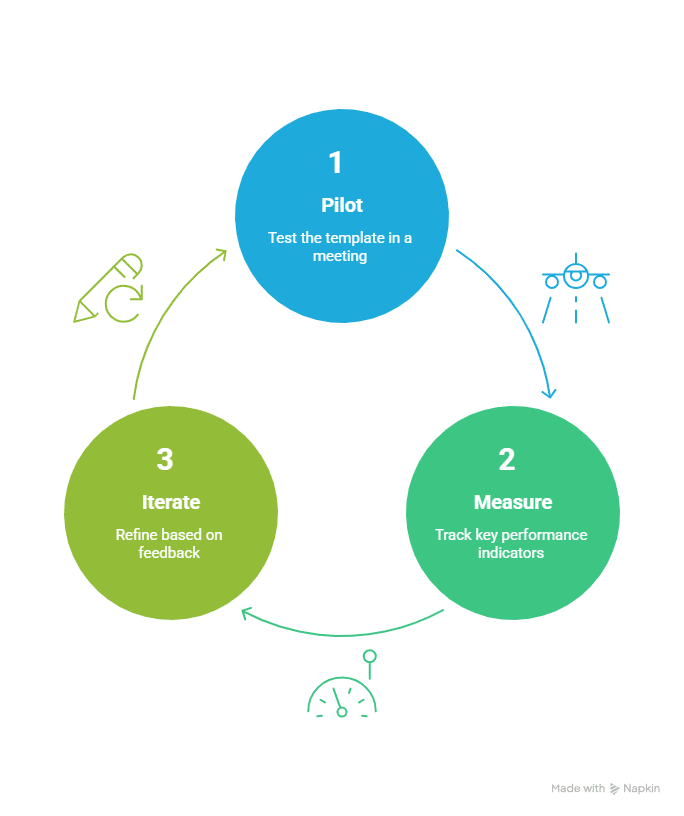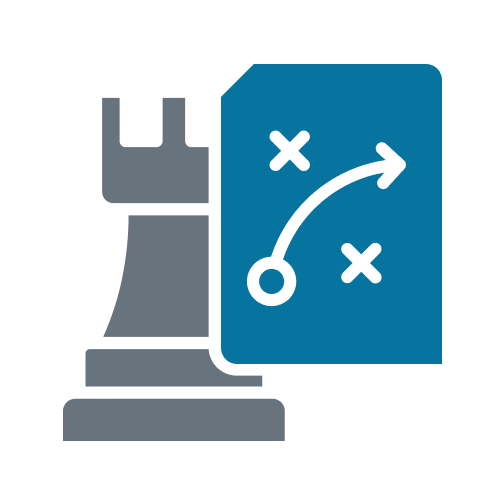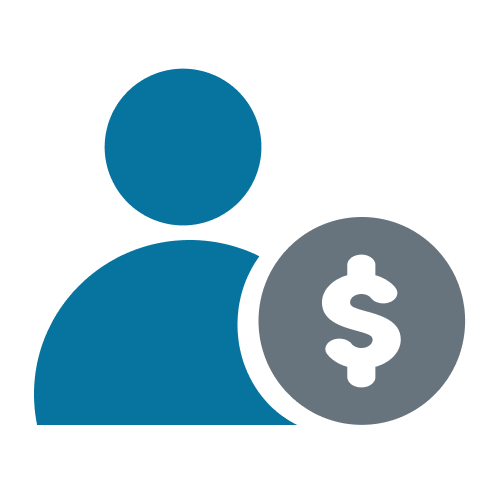A strategy meeting agenda template is the secret weapon for executives who refuse to settle for aimless gatherings. In this blog, we unpack a battle‑tested strategy meeting agenda template that keeps your leadership team laser‑focused, accountable, and ready to deliver real results—no fluff, just fuel for high‑performance decisions.
Why Use a Strategy Meeting Agenda Template
A strategy meeting agenda template isn’t a bureaucratic checkbox—it’s your playbook for clarity and speed. When every session starts with a solid framework, you avoid off‑topic drifts, ensure data‑driven conversations, and hold everyone to purpose.
According to Harvard Business Review, well‑designed agendas “set clear expectations for what needs to occur before and during a meeting” and dramatically increase your team’s ability to address issues swiftly and effectively. Forbes Coaches Council adds that structured agenda templates empower leaders to “pre‑frame discussions, allocate time wisely, and reveal the energy model” needed for breakthrough insights.
How to Run a Strategy Meeting for Maximum Impact
Knowing how to run a strategy meeting transforms your template from static document to dynamic session. Begin with pre‑reads distributed 48 hours in advance, so discussions start at full throttle. Assign a facilitator to keep time and a scribe to capture decisions in real time. As HBR advises, “design your agenda around questions” to promote engagement and ensure that every item adds strategic value. And don’t shy away from a debrief at the end—use a rapid “plus/delta” exercise to iterate your strategy meeting agenda template for next time.
Strategy Meeting Agenda Template: 10 Must‑Have Elements
Clear Meeting Objective
Kick off by stating your target: “Decide Q3 market entry strategy” or “Validate FY26 growth projections.” When objectives are explicit, your team aligns instantly and resists the urge to wander.
Pre‑Meeting Pre‑Work
Circulate dashboards, SWOT summaries, and competitor analyses at least two days before. Prepared participants spend less time catching up and more time co‑creating.
Time‑Boxed Discussion Topics
Allocate strict time slots—e.g., 15 minutes for data review, 20 minutes for ideation. Time‑boxing prevents marathon monologues and keeps energy high.
Roles & Responsibilities
Who’s facilitating? Who presents the financials? Who captures action items? A simple RACI (Responsible, Accountable, Consulted, Informed) clarifies these roles and nixes confusion.
Performance Data Review
Embed a 10‑minute KPI check: revenue vs. target, customer churn trends, net promoter scores. Data keeps the conversation grounded in reality. Harvard Business Review notes that “making data visible” drives better problem‑solving in meetings (https://hbr.org/2016/04/a-step-by-step-guide-to-structuring-better-meetings).
SWOT or Strategic Analysis
Run a rapid SWOT (Strengths, Weaknesses, Opportunities, Threats) analysis to surface hidden variables. Structured strategic analysis fosters contrarian thinking and flags blind spots before they bite.
Breakout Action Sessions
Divide into small groups to tackle critical issues—pricing, product roadmap, market entry. Reconvene to share top insights and vote on best ideas. This high‑engagement format supercharges creativity.
Decision‑Point Checklists
For each agenda item, define “decision criteria”—e.g., “We need minimum 15% ROI within 12 months to greenlight this initiative.” Checklists ensure you don’t rubber‑stamp vague proposals.
Next‑Steps & Accountability
Document owner, due date, and success measure for every action. Embed these into your project‑management system to guarantee follow‑through. Forbes emphasizes that post‑meeting accountability closes the loop on execution.
Post‑Meeting Follow‑Up Plan
Within 24 hours, distribute concise minutes, updated dashboards, and schedule the next checkpoint. A robust follow‑up routine turns your strategy meeting agenda template into a living, evolving blueprint.
Customizing Your Strategy Meeting Agenda Template
No two organizations are identical. Tailor your strategy meeting agenda template by meeting frequency (weekly tactical vs. quarterly offsite), participant seniority, and industry context. For virtual teams, build in tech checks and shorter segments to combat Zoom fatigue. You can adapt your templates into two‑minute, 10‑minute, weekly, and roleplay agenda frameworks to suit diverse meeting types.
Strategy Meeting Best Practices & Tips
• Engage with Questions: Frame each agenda item as a question—“How do we defend against competitor X’s new pricing model?”—to trigger critical thinking.
• Optimal Team Size: Limit to 5–12 participants. Too many cooks spoil the broth; too few miss critical perspectives.
• Leverage Storytelling: Connect numbers to narrative—share customer anecdotes before diving into churn statistics. This deepens strategic empathy.
• Digital Collaboration Tools: Use shared docs, virtual whiteboards, and real‑time polling to keep remote teams active.
Common Pitfalls When Running a Strategy Meeting
• Overloading the Agenda: Packing 15 topics into a two‑hour slot guarantees shallow outcomes. Keep it to 5–7 high‑impact items.
• Poor Time Management: Ignoring the clock invites derailment. Trust your strategy meeting agenda template’s time‑boxes and enforce them.
• Lack of Follow‑Through: Decisions without action items are just hot air. Insist on owners, deadlines, and metrics.
Next Steps: Implementing Your New Agenda Template
Once you’ve tailored your strategy meeting agenda template, it’s time to put it into play. This three‑step rollout isn’t just about checking boxes — it’s about embedding a performance‑driven rhythm into your leadership team’s DNA.

1. Pilot: Test in Your Next Leadership Huddle
- Select the right forum. Choose a regular leadership touch‑point—your weekly or biweekly huddle—so you can trial the new template without the pressure of a high‑stakes offsite.
- Brief your team. Before you kick off, send a one‑page “what to expect” note explaining the new structure: why you’ve added each element, who owns what, and what success looks like. Framing your pilot as an experiment invites curiosity and reduces resistance.
- Observe and coach. As facilitator, pay close attention to where the flow accelerates or stalls. Jot down moments when discussions linger or derail, and when decision points hit their marks. Your role is both coach and referee—stepping in to enforce time‑boxes or to call out tangents that threaten your agenda’s integrity.
2. Measure: Track Engagement, Decision Speed, and Execution Rate
- Engagement scores. At the end of your pilot, ask each participant to rate on a 1–5 scale how focused, energized, and heard they felt. Simple pulse surveys or quick thumbs‑up/thumbs‑down polls give you quantitative insight.
- Decision speed. Record the time from agenda item kick‑off to a clear yes/no/next‑step resolution. If your template is working, you’ll see tighter decision cycles—fewer “we’ll circle back” deferrals and more decisive outcomes.
- Execution rate. Two weeks after the meeting, audit your action‑item list. How many items are in progress or complete? A high execution rate signals that your strategy meeting agenda template is driving real follow‑through, not just theoretical alignment.
3. Iterate: Collect “Plus/Delta” Feedback and Refine
- Plus/Delta debrief. At the close of the pilot meeting, spend five minutes on a rapid “plus/delta” — what worked (Plus) and what you’d change (Delta). Encourage brutal honesty: a template that feels like red tape today can evolve into your secret weapon tomorrow.
- Adjust time‑boxes & roles. If data review ran long, shorten that slot or split it into two focused segments. If nobody volunteered as scribe, rotate the role or appoint a dedicated note‑taker. Small tweaks compound into big performance gains.
- Share improvements. Send an updated template within 24 hours, highlighting the changes made based on real feedback. This transparency builds trust in the process and fuels a culture of continuous improvement.
FAQs: Strategy Meeting Agenda Template
Q: What makes a good strategy meeting agenda template?
A concise structure with clear objectives, data review, breakout sessions, and documented next steps ensures every minute is purposeful.
Q: How long should my strategy meeting be?
Aim for 90–120 minutes. Shorter ensures energy; longer risks fatigue and diminishing returns.
Q: Can I adapt this template for virtual meetings?
Absolutely. Shorten segments, build in tech checks, and leverage digital whiteboards to maintain focus.
Q: What tools help manage my agenda and action items?
Platforms like Asana, Trello, or Monday.com integrate seamlessly with shared docs and calendars—ideal for tracking post‑meeting tasks.
If you’re serious about transforming your strategy sessions into engines of growth, let’s connect. Head over to our contact page, share your toughest challenges, and let’s create a custom playbook that inspires clarity, fuels accountability, and propels your team toward the bold future you deserve.
👉 Get in touch with Champion PSI today and let’s build your winning strategy—together.










